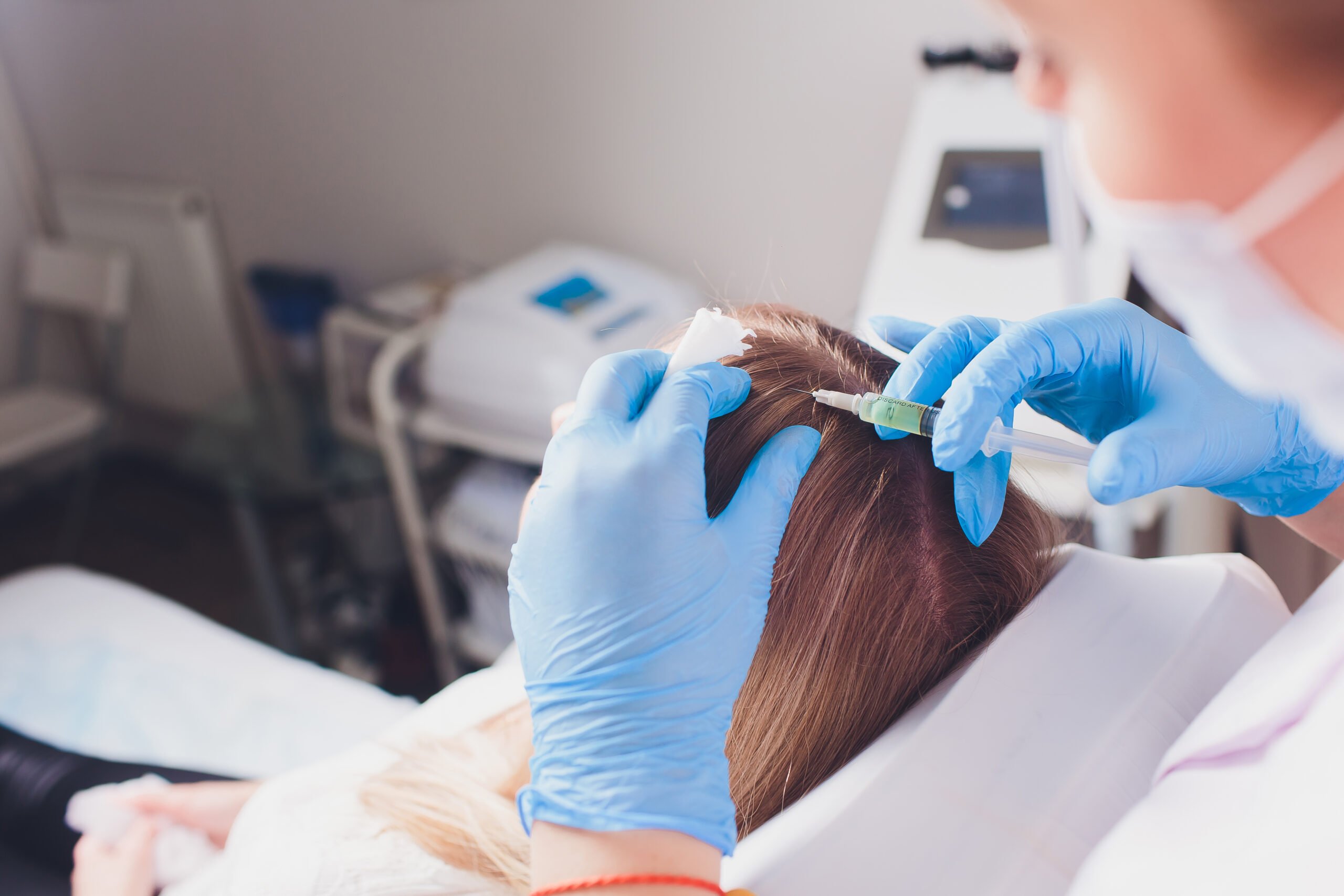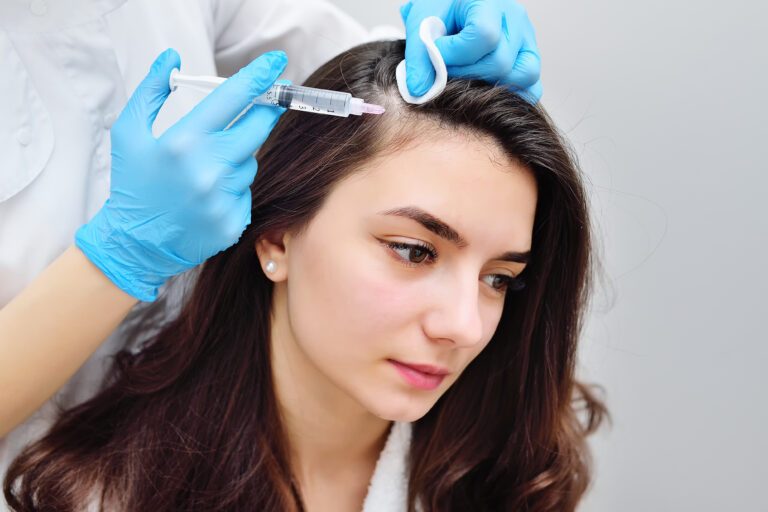What Are Stem Cell Hair Transplants? (All You Need to Know)
Male and female pattern hair loss has been affecting millions of people every year. Fortunately, ways of combating hair loss are available, thanks to our ever-advancing medical technology.
That said, the search for better and more effective ways to battle alopecia is still ongoing. Experts from all over the world are continually trying to find the ultimate solution for hair loss.
This note brings us to the subject of our post, which is stem cell hair transplants. It’s the newest cutting-edge hair restoration technique involving human stem cells.
Is this the ultimate cure for alopecia we’ve all been waiting for? Keep reading, and let’s walk you through the history, process, and future implications of stem cell hair treatment.
What is a Stem Cell?
You probably hear about stem cells in the news or read about them on the internet. After all, they’re the new “holy grail” when it comes to the medical world.
Simply put, stem cells are the “master components” of our bodies. These tiny, seemingly inconsequential materials are the building blocks that develop into blood, bones, and organs.
What makes stem cells unique from other cells that we have in our bodies is that they have the potential to build, restore, and repair any damaged tissues and organs.
It’s made possible by their inherent ability to divide and transform themselves into becoming other types of cells—think about a moldable puzzle piece.
This unique ability led researchers to investigate their capacities with the hope of curing persistent human diseases, such as cancer, autoimmune illnesses, and even hair loss.
Stem Cell Hair Treatment Research
Stem cell research aimed at battling pattern baldness for males and females is still continuing. However, researchers from Italy have already made progress by successfully performing hair stem cell transplantation in 2017.
Using the stem cells found in human hair follicles, they were able to restore the hair of 11 patients that are 38 to 61 years old. The participants were suffering from androgenetic alopecia and were in the severe stages of baldness.
After the procedure, the researchers found that injecting human follicle stem cells (HFSCs) into the scalp can help regenerate healthy follicles. Most importantly, the process was proven safe with no significant side effects.
Currently, different researchers are trying to improve this promising hair restoration technique. While their approaches and tools can vary, the premise of their work uses the same concepts.
A few of these studies revealed that stem cell transplantation encourages stem cells hair growth in people with different hair loss conditions. It goes for both males and females with pattern baldness and cicatricial alopecia.
However, as optimistic as it sounds, there’s not enough research supporting the use of stem cells for hair restoration that would make it available to the public. So be careful of clinics offering stem cell hair transplant FDA approved.
In fact, the FDA has warned about the dangers of undergoing stem cell therapies with unauthorized clinics. As an ongoing medical study, the bureau can only provide an Investigational New Drug (IND) application permit.
So, if you plan on getting a stem cell hair transplant, always look for reputable clinics approved by the FDA. Never resort to shady hair clinics offering cheap remedies to your problem!
How Does Stem Cell Hair Restoration Work?
Stem cell hair restoration works by extracting stem cells from any part of the body. Using this innovative method, doctors and surgeons expect long-term positive results for the overall scalp health of their patients.
The whole procedure relies on the capability of stem cells to transform and change into other types of cells. When injected into the afflicted scalp area, the master cells turn into HFSTs.
Unlike traditional techniques, like FUT and FUE, stem cell hair transplant doesn’t rely on relocating hair follicles. Instead, it focuses on boosting your scalp’s regenerative capacity by repairing damaged tissues vital to hair production.
What are the Steps of a Stem Cell Hair Transplant?
There are three crucial steps in a stem cell hair transplant: tissue sampling, cell processing, and cell injection. Here’s how each step works:
1. Tissue Sampling
The treatment starts with the tissue sampling process using one of two methods: liposuction and punch biopsy. Typically, they’d draw the stem cell sample from your scalp using the latter.
Your surgeon performs a punch biopsy with a sharp, circular tube about the size of a pencil. They then insert the tube into the scalp to get a cylindrical tissue sample.
On the other hand, liposuction involves removing fat tissues from the body using a suction device. Your doctor can take them from fatty portions of your body, like the hips or the abdomen.
Most doctors prefer the scalp skin sample because it contains mesenchymal stem cells. It’s the type of master cell found in the bone marrow that’s highly regenerative.
2. Cell Extraction
After taking the tissue samples, a technician will cut the tissue samples into strips. This step allows them to process the skin samples efficiently.
Once the skin strips are ready, they place the samples into a centrifuge. This device will allow them to extract the stem cells by separating them from the tissues.
During centrifugation, the samples are spun at a rate of 7,500 to 20,000 RPM. While rotating, the centrifugal force will displace the heavier skin particles at the side of the mixture.
On the other hand, the lighter stem cells will pool at the center of the mixture, which makes them easier to extract. The separation process could take 10 to 30 minutes to complete.
3. Cell Injection
After preparing the stem cells, your surgeon will inject them into your scalp, focusing on the most afflicted areas. They do this using a specialized tool called an Ultim Gun.
The injecting sessions could take several weeks to complete. Your doctor might observe how your scalp reacts to the stem cells before proceeding.
Some clinics also use stem cell injections with follicular transplantations. They extract hair grafts from a donor site taking out tissue samples along the way.
After extraction, they process both the grafts and stem cells for insertion. When transplanting, the surgeon will make a series of cuts on your scalp to insert the grafts and cells.
Are Stem Cell Hair Transplants Successful?
Our current techniques for restoring hair are far from perfect. Contemporary methods can take several months or years of sessions and waiting before you can achieve the desired results.
Numerous factors can also play a role in the success of the hair restoration procedure. The clinic, underlying medical conditions, suitability, and sanitary practices are crucial to its outcome.
That said, the initial research for stem cell transplantation demonstrated promising results. They recorded a staggering 29% increase in hair density just one year after the procedure.
The participants who suffered from androgenic alopecia are now experiencing lush crowns! With this in mind, we can expect improvements in stem cell transplants in the years to come.
Keep in mind, however, that stem-cell-based therapies are still in their infancy stage. We need further research to examine their effectiveness in battling hair-related diseases.
Aside from that, robust clinical studies regarding the safety of the process haven’t been done. So before that, we recommend you exercise extra caution as the FDA advised.
Are There Side Effects of Stem Cell Hair Transplants?
If you plan on trying a stem cell hair transplant, you might be wondering about the side effects. After all, there’s not enough literature about stem cell therapy for hair loss before and after.
As a medical procedure, complications are within the realm of possibilities. There’s a slight chance of developing infections as punch biopsy and liposuction involve cutting the skin.
In addition, scarring on the donor and receiving site is possible after the surgery. If you opt for a stem cell and hair graft transplant, you may experience scabbing and bleeding.
To prevent this, always follow your doctor’s advice. If you have any underlying conditions, inform your surgeon before the procedure to avoid endangering your life.
Always keep the surgery site clean while avoiding straining activities that can cause sweating. If you experience severe scalp bleeding or fever, speak to your doctor immediately.
Stem Cell Hair Transplant Cost
As research on stem cell transplants for hair loss is still ongoing, its cost may vary from clinic to clinic. However, some professionals with FDA investigational permits offer the service with prices ranging from $3,000 to $10,000.
For reference, traditional follicular relocation procedures (FUT and FUE) cost higher at $4,000 to $15,000 per session. These numbers can go lower or higher depending on the severity of your hair loss issue.
Final Thoughts
Pattern hair loss is a distressing condition that affects millions of men and women. Fortunately, thanks to our never-ending search for a solution, we now have several viable options for revitalizing our crowning glory.
The discovery of stem cell therapy for hair loss allows us to look optimistically at the future of hair restoration techniques. We hope one day, alopecia will no longer be a dreaded disease but a passing inconvenience!







